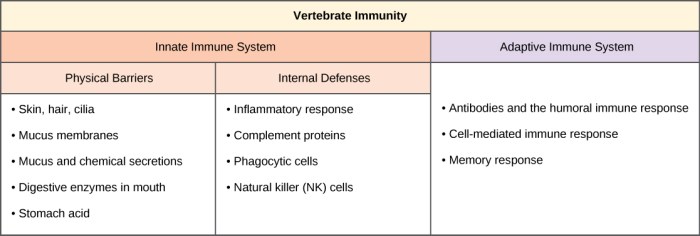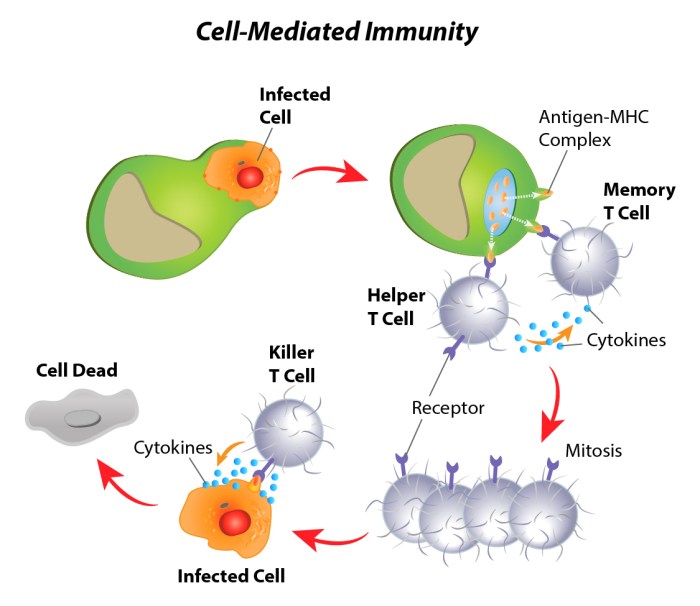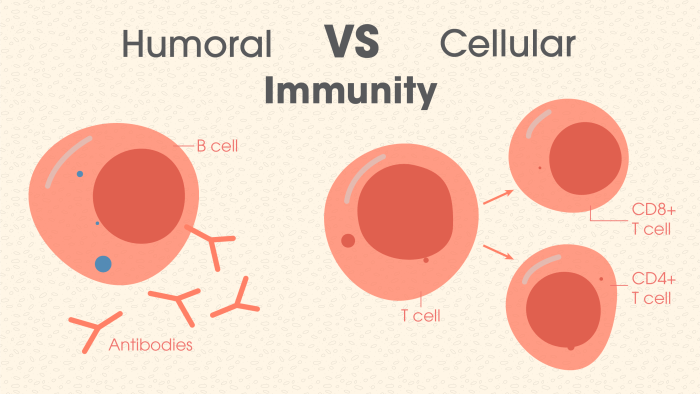Vertebrate immune responses involve communication, a complex network of chemical signals and cell-to-cell interactions that orchestrate a coordinated defense against pathogens. This intricate communication system allows immune cells to recognize, respond to, and eliminate foreign invaders while maintaining tolerance to self.
Chemical messengers, such as cytokines and chemokines, serve as the language of immune communication, transmitting information about the presence of pathogens and the activation state of immune cells. These signals are recognized by specific receptors on immune cells, triggering a cascade of events that lead to appropriate immune responses.
Immune Communication in Vertebrates: Vertebrate Immune Responses Involve Communication

Vertebrates possess complex immune systems that rely on effective communication between immune cells to coordinate responses against pathogens. Chemical signals play a crucial role in this communication, with specific messengers initiating and modulating immune responses. For instance, cytokines, such as interleukin-2 and interferon-gamma, are key mediators of cell-to-cell communication, activating and directing immune cells to specific targets.
Immune cells recognize and respond to these signals through receptors on their surfaces, triggering intracellular pathways that result in appropriate immune responses.
Cell-to-Cell Communication in Immune Responses
In addition to chemical signals, cell-to-cell communication is essential for coordinating immune responses. Adhesion molecules, such as integrins and selectins, facilitate the binding of immune cells to each other and to target cells, allowing for direct interactions. Cytokines also play a role in cell-to-cell communication by inducing the expression of adhesion molecules on immune cells.
Antigen presentation, where antigen-presenting cells display foreign antigens on their surfaces, is crucial for initiating adaptive immune responses, as it allows T cells to recognize and eliminate infected cells.
Regulation of Immune Communication, Vertebrate immune responses involve communication
Immune communication is tightly regulated to prevent excessive or inappropriate responses. Feedback loops and inhibitory signals, such as regulatory cytokines, help to control the intensity and duration of immune responses. Dysregulation of immune communication can lead to autoimmune diseases, where the immune system attacks the body’s own tissues, and chronic inflammation, where persistent immune responses cause tissue damage.
Comparative Analysis of Vertebrate Immune Communication
Immune communication mechanisms vary across vertebrate species, reflecting evolutionary adaptations to different environments and pathogens. For example, the immune system of fish has evolved to respond effectively to aquatic pathogens, while the immune system of mammals has adapted to combat a wider range of pathogens in terrestrial environments.
Understanding these differences provides insights into the diversity of immune strategies and their implications for immune function and disease susceptibility.
FAQ Explained
What is the role of chemical signals in immune communication?
Chemical signals, such as cytokines and chemokines, act as messengers that transmit information about the presence of pathogens and the activation state of immune cells.
How do immune cells recognize and respond to chemical signals?
Immune cells express specific receptors that recognize chemical signals. Upon binding, these receptors trigger a cascade of events that lead to appropriate immune responses.
What is the importance of antigen presentation in immune cell communication?
Antigen presentation is crucial for immune cell communication as it allows immune cells to recognize and respond to specific pathogens. Antigen-presenting cells display fragments of pathogens on their surface, which are then recognized by T cells.


